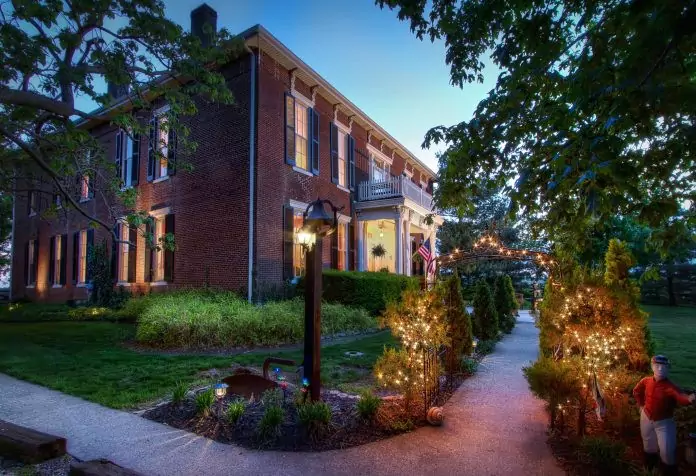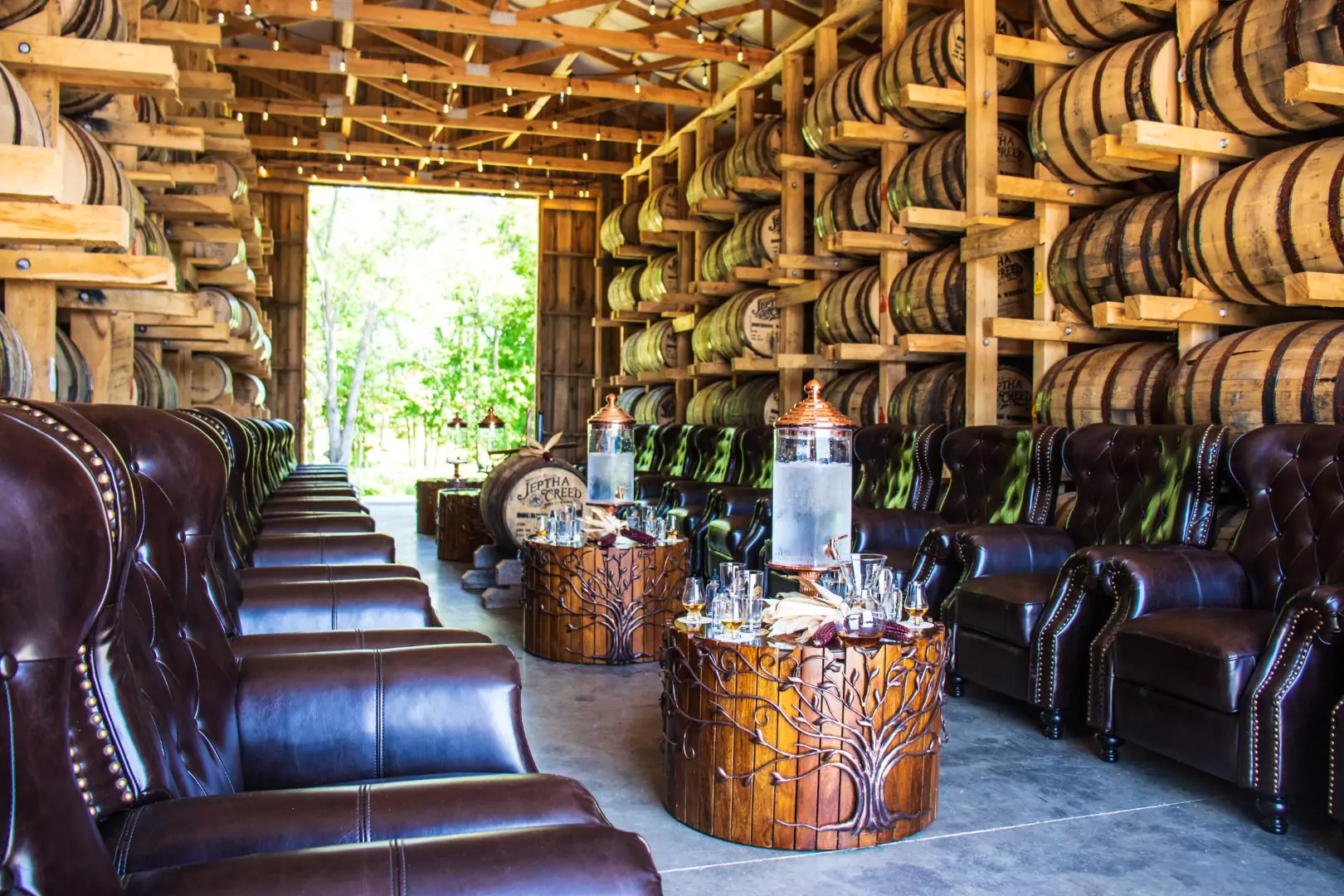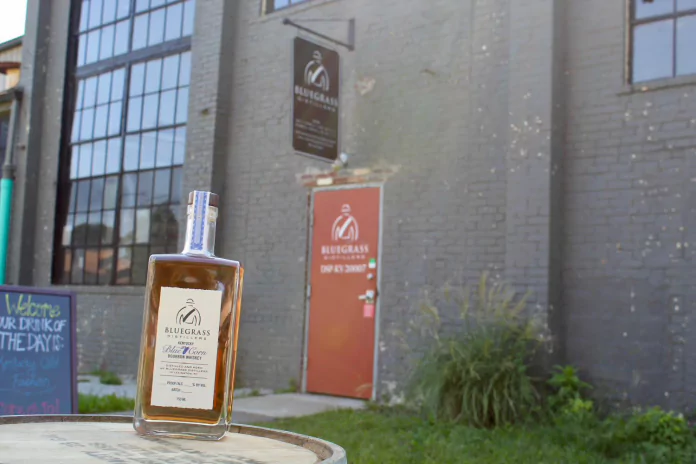Craft vs. Commercial Kentucky Distilleries: Which Should You Visit?
Are you a spirits enthusiast looking to explore the world of distilleries? If so, then you may be faced with the age-old question: craft or commercial? In this blog post, we will dive into the differences between craft and commercial distilleries of Kentucky, helping you decide which one is right for your next adventure. Get ready to sip and savor as we uncover the unique experiences each type of distillery has to offer. Cheers!
Exploring the Spectrum of Bourbon Production

Bourbon is a type of whiskey that is primarily made from corn and aged in charred oak barrels. It has become increasingly popular over the years, with more and more distilleries popping up all over the country. However, not all bourbon production is created equal. There are two main categories of bourbon production – craft and commercial distilleries.
Kentucky Craft distilleries are typically smaller, independently owned operations that produce limited quantities of high-quality bourbon. They often use traditional methods and take great pride in their attention to detail, resulting in unique and flavorful spirits. Craft distillers also tend to source their ingredients locally, supporting the local economy and creating a sense of community.
On the other hand, commercial distilleries are larger scale operations that produce mass quantities of bourbon for distribution on a national or even global level. These distillers often have more resources at their disposal and can afford to experiment with different techniques and flavor profiles. However, some argue that this can sometimes result in a loss of authenticity and character in the final product.
One key difference between craft and commercial bourbon production is the use of grains other than corn. While corn must make up at least 51% of the mash bill for it to be considered bourbon, many craft distillers opt to use a higher percentage of rye or wheat as well. This creates a more complex flavor profile with notes of spice or sweetness depending on the grain used.
In addition to using different grains, craft distillers also often employ unique aging methods such as finishing their bourbons in different types of barrels (such as sherry or port) or experimenting with shorter aging times at higher temperatures. These techniques can lead to truly one-of-a-kind bourbons that cannot be replicated by larger-scale operations.
Commercial Kentucky distilleries, on the other hand, tend to stick to tried-and-true methods for consistency across batches and brands. This may appeal to those who prefer a more consistent flavor profile in their bourbon.
At the end of the day, whether you choose to visit a craft or commercial distillery for your bourbon tasting experience will depend on personal preference. Craft distilleries offer a chance to taste unique and often locally-sourced spirits while supporting small businesses, while commercial distilleries offer a more standardized yet reliable option. Whichever you choose, exploring the spectrum of bourbon production is sure to be an enjoyable and educational experience.
Craft vs. Commercial Kentucky Distilleries: Differences Explained
When it comes to visiting distilleries, there are two main types that most people encounter: craft and commercial. While both may offer a similar experience of learning about the process of making spirits and sampling their offerings, there are significant differences between the two.
Craft distilleries are typically small, independent operations that produce limited quantities of spirits. They often use traditional methods and locally sourced ingredients to create unique and artisanal products. On the other hand, commercial distilleries are larger-scale operations that produce mass-market spirits using modern techniques and often source their ingredients from various locations.
One of the most significant differences between these types of distilleries is their focus on quality versus quantity. Craft distilleries prioritize creating high-quality spirits with unique flavors and characteristics, while commercial distilleries aim for consistency in taste and production on a larger scale. This difference can be seen in everything from the ingredients used to the equipment utilized during the production process.
Another crucial aspect to consider is how each type of distillery markets its products. Craft distilleries often rely heavily on word-of-mouth recommendations and local events to spread awareness about their brand. They also tend to have a smaller distribution range compared to commercial brands, which often have nationwide or even international reach through marketing campaigns and partnerships.
The visitor experience at craft versus commercial distilleries can also differ significantly. Craft distilleries usually offer more intimate tours where visitors can interact with the owners or master distiller personally and learn about each step of the production process. In contrast, commercial tours may be more standardized and less personalized due to their larger scale operations.
Pricing is another factor that distinguishes these two types of distilleries. Due to their limited production quantities and focus on quality over quantity, craft spirits tend to be priced higher than commercially produced ones. Commercially produced spirits often have economies of scale working in their favor, allowing them to offer lower prices.
So, which distillery should you visit? It ultimately depends on your preferences and what you hope to gain from the experience. If you are interested in learning about traditional techniques and trying unique, small-batch spirits, a craft distillery may be the better choice. However, if you want a more standardized tour and access to well-known brands at a lower cost, a commercial distillery may be more suitable for you. Whichever option you choose, both types of distilleries offer an exciting and educational experience that can deepen your appreciation for the art of spirit-making. Learn more about the craft distillery movement and its impact on the spirits industry.
Pros and Cons
When it comes to choosing between a craft distillery or a commercial kentucky distillery, there are pros and cons to consider for each option. Both types of distilleries offer unique experiences and have their own advantages and disadvantages. Here is a breakdown of the pros and cons of visiting a craft distillery versus a commercial distillery.
Craft Distilleries:
Pros:
- Personalized Experience: One of the biggest perks of visiting a craft distillery is the personalized experience you can expect to receive. Craft distilleries are often smaller in size, allowing for more intimate tours and interactions with the staff. You may even get the chance to meet the master distiller or see them at work crafting their spirits.
- Unique Products: Craft distilleries are known for producing small batches of unique spirits that you won’t find on store shelves. These products are often made with locally-sourced ingredients, giving them a distinct flavor that sets them apart from mass-produced spirits.
- Learn About the Process: Since craft distilleries tend to be smaller in scale, you may have the opportunity to learn about every step of the production process during your visit. This can give you a deeper understanding and appreciation for how your favorite spirits are made.
Cons:
- Limited Availability: Due to their small size, many craft distilleries have limited production capabilities which can result in limited availability of their products. If you fall in love with one of their spirits during your visit, it may be difficult to find it again outside of their tasting room.
- Higher Prices: Craft distilleries often have higher production costs compared to commercial distilleries, which can result in higher prices for their products. While this may be justified by the quality and uniqueness of their spirits, it may not be ideal for those on a budget.
Commercial Distilleries:
Pros:
- Wide Range of Products: Commercial distilleries are able to produce spirits on a larger scale, resulting in a wider range of products available for purchase. This means you may have more options to choose from and are more likely to find your favorite spirit in stores.
- Lower Prices: Due to their larger production capabilities, commercial distilleries can often offer their products at lower prices compared to craft distilleries. This makes them a more budget-friendly option for those looking to stock their home bar.
- Consistency: Commercial distilleries follow strict production processes and have consistency measures in place, ensuring that each bottle of their product tastes the same no matter where it is purchased. This can be important for those who have found their go-to drink and want it to taste the same every time they buy it.
Cons:
- Less Personalized Experience: With larger tour groups and busier tasting rooms, you may not get the same personalized experience at a commercial distillery as you would at a craft distillery. You may not have the opportunity to interact with the staff or learn about the production process in as much detail.
- Less Unique Products: Commercial distilleries often focus on producing popular and well-known spirits, resulting in less unique products compared to craft distilleries. If you are looking for something out of the ordinary, a commercial distillery may not have as many options for you.
- Mass Produced: Some people may view mass production as a con when it comes to choosing a commercial distillery. While this allows for wider availability, it can also result in a perception of lower quality or lack of authenticity for some consumers.
Ultimately, whether you choose to visit a craft or commercial distillery will depend on your personal preferences and what you hope to get out of the experience. Both types of distilleries offer their own unique advantages and can provide an enjoyable and educational experience for visitors.
Balanced Itinerary Suggestions
When planning a trip to explore the world of distilleries, it can be overwhelming to decide which ones to visit. With so many options, how do you choose between craft and commercial distilleries? To help make your decision easier, we have compiled some balanced itinerary suggestions for your consideration.
Firstly, it is important to understand the differences between craft and commercial distilleries. Craft distilleries are typically smaller and independently owned operations that focus on producing small batches of high-quality spirits. On the other hand, commercial distilleries are larger-scale operations that produce mass quantities of spirits for distribution worldwide.
For those looking for a well-rounded experience, we recommend starting with a visit to a commercial distillery. These establishments often have impressive facilities with state-of-the-art equipment and knowledgeable tour guides. You will get an in-depth look at the production process on a large scale and learn about their history and brand story.
After your visit to a commercial facility, balance out your itinerary by visiting a craft distillery next. These smaller operations offer a more intimate experience where you can interact with the owners or master distillers themselves. Craft distillers take pride in their hands-on approach and attention to detail in creating unique flavors. You may even get the opportunity to taste spirits straight from the still or participate in blending your own personalized bottle.
To further balance out your itinerary, consider including visits to both urban and rural locations. Commercial distilleries are often located in metropolitan areas while craft distillers tend to be found in more rural settings. This allows you not only to see different production methods but also experience diverse environments.
In addition to visiting different types of facilities, try incorporating various types of spirits into your itinerary as well. While most people associate whiskey with traditional American bourbon or scotch from Scotland, there are many other types of spirits worth exploring such as gin from England or vodka from Russia.
Don’t forget to mix in some non-distillery activities as well. Depending on the location of your chosen distilleries, you may be able to explore nearby attractions such as museums, local markets, or scenic nature trails.
A balanced itinerary should include visits to both craft and commercial distilleries, urban and rural locations, different types of spirits, and non-distillery activities. This will provide a well-rounded experience that allows you to appreciate the diversity within the world of distilling while also satisfying your thirst for knowledge and adventure. Cheers!
Discover the heart and soul of bourbon country with Bourbon Town Tours. Experience exclusive tours that offer a deep dive into the rich history, culture, and, of course, the exquisite taste of America’s native spirit. Whether you’re a bourbon aficionado or new to the world of whiskey, our expert guides will ensure an unforgettable journey through the most iconic distilleries and hidden gems of bourbon country. Ready to embark on an adventure of a lifetime? Book your tour today and let Bourbon Town Tours show you the true spirit of bourbon.







